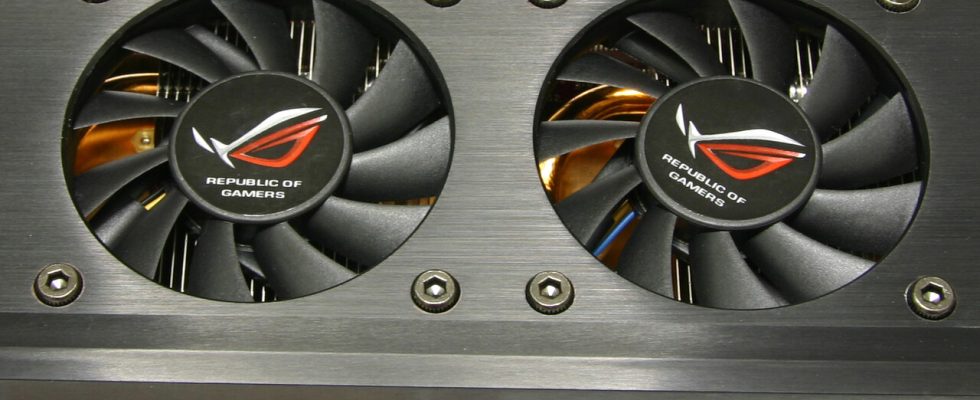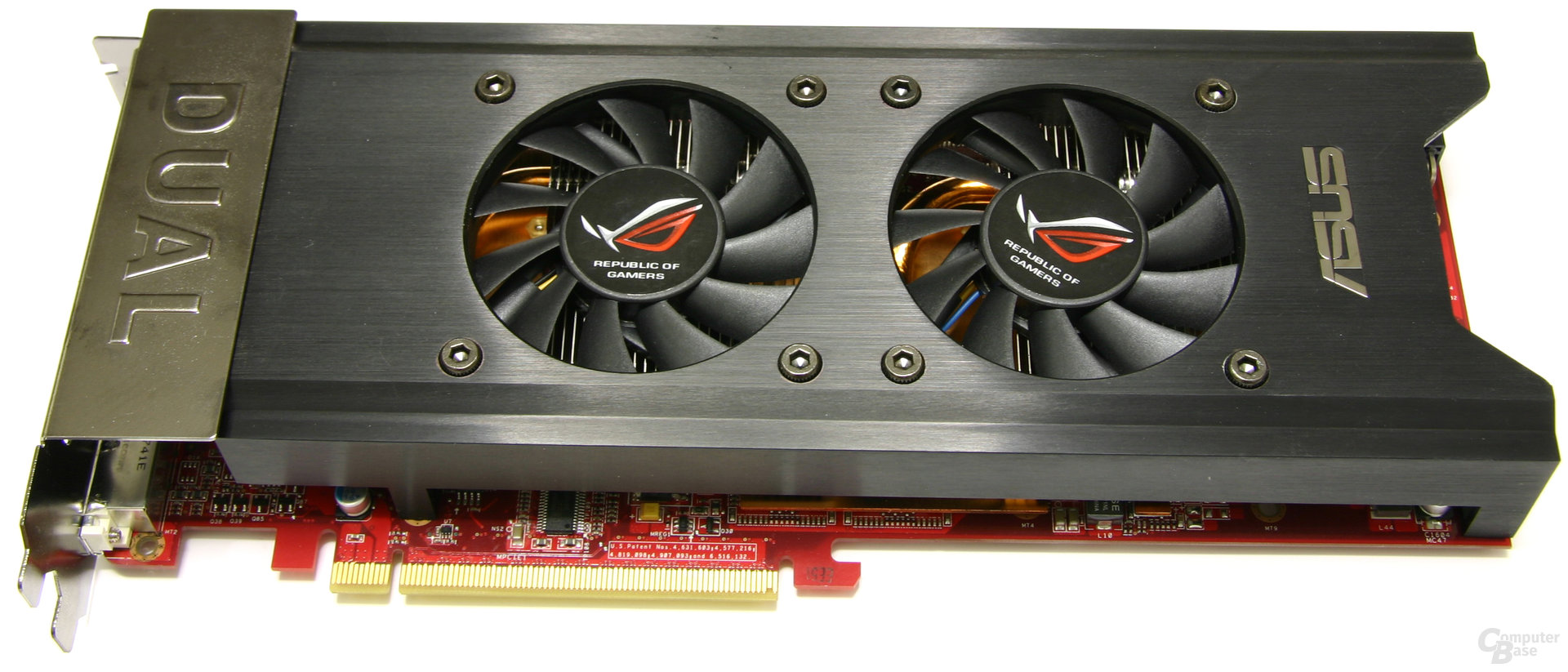A curiosity from Asus’ graphics card portfolio was tested 15 years ago. The Asus EAH3850 X2 1GB combined two ATi Radeon HD 3850 on one PCB with a specially designed 28 cm long cooler. The Frankenstein dual GPU graphics card struggled in the test.
Two mid-range GPUs on one PCB
In contrast to the ATi Radeon HD 3870 X2, the Asus Radeon HD 3850 X2 was not officially introduced by AMD graphics card, but an own creation. From a technical point of view there were no surprises, basically the manufacturer flanged two RV670 GPUs with clock speeds corresponding to those on the Radeon HD 3850 onto one graphics card. The manufacturer installed a PCIe switch so that the two GPUs could communicate with each other. It was the PLX PEX 8547 – the same model that was used on the Radeon HD 3870 X2.
On the other hand, the PCB of the Asus EAH3850 X2 1GB had nothing to do with that of the reference design of the ATi Radeon HD 3870 X2. Asus completely redesigned this and packed it densely with components on both the front and back. As with the Radeon HD 3870 X2, there was a six-pin and an eight-pin connector for the power supply. However, the latter was only required as an option for overclocking in the driver menu; alternatively, a six-pin model was sufficient. A CrossFire connection was also available, through which a quad-GPU team could be implemented.
Asus installed a large dual-slot cooling system on the dual GPU card that occupied the entire front. It consisted of two copper cooling plates covering the two RV670 GPUs and the voltage converters. Two heat pipes per GPU dissipate the waste heat to the aluminum fins of the heat sink. These in turn were supplied with fresh air by two 70 mm axial fans.
Inferior to single GPU graphics cards
The Asus Radeon HD 3850 X2 didn’t cut a good figure in the test. It was almost consistently inferior to fast single-GPU graphics cards like the GeForce 9800 GTX. Since these were two mid-range GPUs, they didn’t offer any of the advantages of a multi-GPU system (high raw performance), but all the disadvantages, such as high power consumption and system noise as well as dependence on CrossFire support and the occurrence of micro stutters.
These problems occurred more frequently with the Asus EAH3850 X2 1GB. The cooling was similar to a jet plane – originally the editors suspected that it was a defective fan control, but that was not the case. Despite the lower performance, the energy consumption of the entire system with the Radeon HD 3850 X2 was around 20 percent higher than that of the system with a GeForce 9800 GTX.
Conclusion
The Asus Radeon HD 3850 X2 wasn’t a good graphics card. It was slow, noisy and consumed a lot of energy. At the time of the test, the price was still unknown, according to the ComputerBase price comparison, it should later cost around 300 euros. From today’s perspective – with mid-range graphics cards like the GeForce RTX 4070 (test) for almost 700 euros – that’s not a lot of money for a dual-GPU graphics card, but the faster GeForce 9800 GTX was already available for 250 euros.
In the category “In the test 15 years ago”, the editors have been taking a look at the test archive every Saturday since July 2017. The last 20 articles that appeared in this series are listed below:
More content of this kind and many other reports and anecdotes can be found in the retro corner in the ComputerBase forum.


